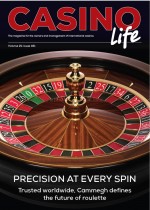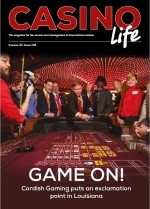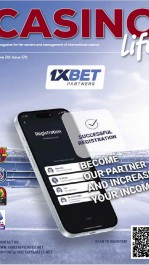Online casinos have evolved since the early days of clunky interfaces and limited game libraries. These days, developers know that engaging a player goes beyond loading screens and payout percentages. What makes a player stick around is a mix of sharp visuals, calculated probabilities, and thoughtful user experience design. Together, these elements form the foundation of successful casino platforms and help them compete for attention in a crowded market.

Image: Pixabay.com
Mathematical Design
Behind the scenes of every slot or roulette wheel lies a set of probabilities that shapes the entire experience. A casino game isn’t engaging unless it balances entertainment with perceived fairness, and that comes down to math. Developers rely on return-to-player (RTP) percentages, random number generators (RNGs), and hit frequencies to create games that appeal to different player types.
Understanding how these systems affect engagement is a core part of gameplay analysis. This process looks at how features like volatility, bonus triggers, and jackpot odds influence a player’s decisions. For example, Viola D’Elia points out that high-volatility slots attract risk-takers who enjoy the thrill of potentially high returns, even if wins are infrequent. Meanwhile, low-volatility games with frequent small payouts keep casual players engaged longer.
Bonus rounds are another area where math and engagement overlap. A cleverly timed free spin feature or multiplier mechanic not only raises excitement but also gives players the impression of control or luck swinging in their favor. The psychology of near-wins, like almost hitting the jackpot, is another mathematically designed hook, keeping players in the loop of "just one more spin."
Visuals That Capture and Hold Attention
A game's theme, animation quality, color palette, and overall visual fluidity affect how players feel about spending time on a platform. Slot developers like NetEnt and Red Tiger know this well, frequently rolling out visually striking titles that combine familiar symbols with vibrant themes, whether ancient mythology or pop culture references.
Eye-catching graphics are beautiful and also serve a purpose. Developers use them to guide player focus, direct attention toward bonuses or jackpots, and keep gameplay exciting. Well-animated features, such as cascading reels or expanding wilds, entertain players and help sustain their interest through motion and anticipation.
Meanwhile, background music and sound effects work together with visuals. Casino games often replicate real-world casino sounds, like coin drops or spinning reels, to mimic the atmosphere of physical slots. This audiovisual harmony feels both familiar and exciting, especially for players transitioning from the luxury and charm of land-based casinos to online formats.
UX Design: The Silent Influencer
User experience (UX) design doesn’t grab headlines the way graphics or jackpots do, but it plays just as large a role in retention. Players rarely comment on good UX, but they’ll notice when it’s bad. A clunky interface, hard-to-find games, or a poorly optimized mobile site can be enough to send users elsewhere.
Navigation is key. Casinos that offer seamless browsing between slots, table games, and promotions remove friction from the player’s journey. Features like predictive search, categorized filters, and personalized dashboards help users quickly find what they enjoy. Companies like Evolution and Playtech, which are two of the biggest names in online gaming infrastructure, often design with simplicity and mobile adaptability at the core of their platforms.
Speed is another major UX factor. Games must load quickly, and lobbies should not lag. With the rise of live dealer games, delays in video streaming or misaligned controls break immersion. To combat this, operators invest in scalable server infrastructure and responsive design to serve players across devices and regions.
Using data gathered from player behavior, casinos present game suggestions, bonus offers, and promotional popups at moments designed to catch interest without interrupting the experience. The balance here is delicate. Too many pop-ups become a nuisance, while too few miss an opportunity to re-engage.
The Psychology of Design
The most successful casino platforms understand human behavior. They provide entertainment while guiding emotional responses. Slot games, for instance, are structured around anticipation and reward. Elements such as flashing lights, celebratory sounds, and coin shower animations all contribute to a sense of achievement, even when the payout is small.
Gamification techniques, like progress bars, achievement badges, or seasonal tournaments, build on this by introducing goals and a sense of progression. Players who see their activity being rewarded, even symbolically, are more likely to remain active.
Color theory also plays a role. Reds and golds are often used to signal excitement or reward, while blues and greens can create a calming effect. Fonts, button shapes, and spacing between clickable elements all contribute to how players interact with the platform. These aren’t arbitrary choices. They’re backed by behavioral science and years of A/B testing.
Moreover, accessibility features are gradually becoming part of good design. High-contrast modes, readable font options, and adaptable controls help reach a wider audience, including those with visual or motor impairments.
Regulation and Responsible Engagement
No discussion of player engagement would be complete without considering regulation. Modern casino platforms must comply with strict rules around fairness and responsible gaming. Regulatory bodies such as the UK Gambling Commission and Malta Gaming Authority mandate disclosures on RTP rates, time-out tools, deposit limits, and access to self-exclusion schemes.
These features are not just compliance checkboxes. Done well, they support long-term player engagement by building trust. Players are more likely to stay with platforms they believe are transparent and safe.
Online casinos that provide voluntary session reminders or spending trackers let players feel more in control. This type of self-management is a growing priority in user interface design and serves both ethical and commercial purposes. A user who feels respected and supported is a loyal user.
The Interplay Between Design and Loyalty
A player might land on a casino site for its welcome bonus, but whether they return depends largely on their experience during the first session. That’s where the intersection of visuals, math, and UX quietly works its magic. If a site loads fast, the games are fun and fair, and navigation is smooth, chances are that the player will stick around.
Casino brands that understand the psychology behind design tend to enjoy higher retention rates. Whether it’s through striking visuals, mathematical engagement hooks, or frictionless user flows, each detail adds up. The goal is clear: turn casual players into loyal users, not just for one game, but across months or even years.



















